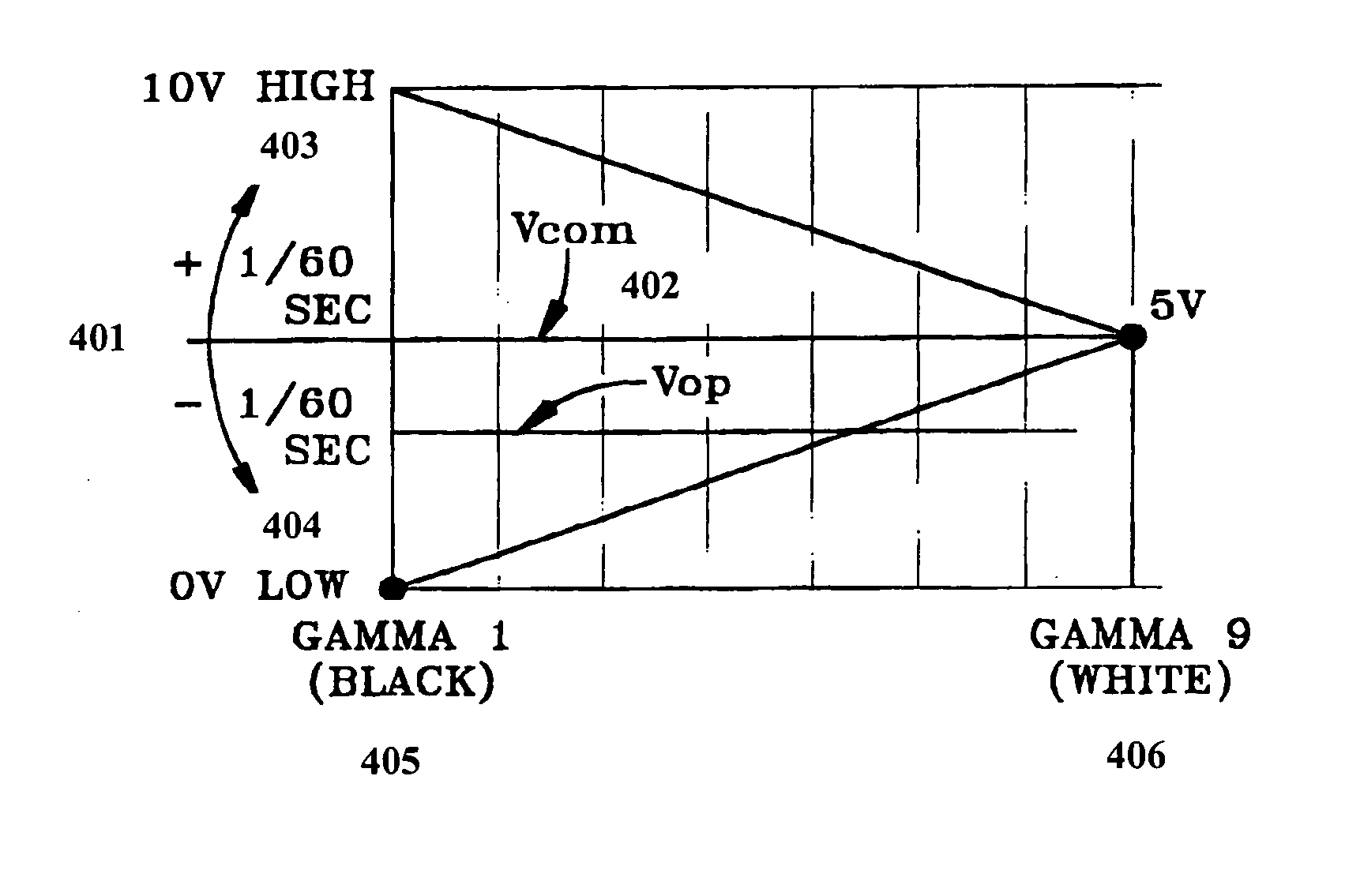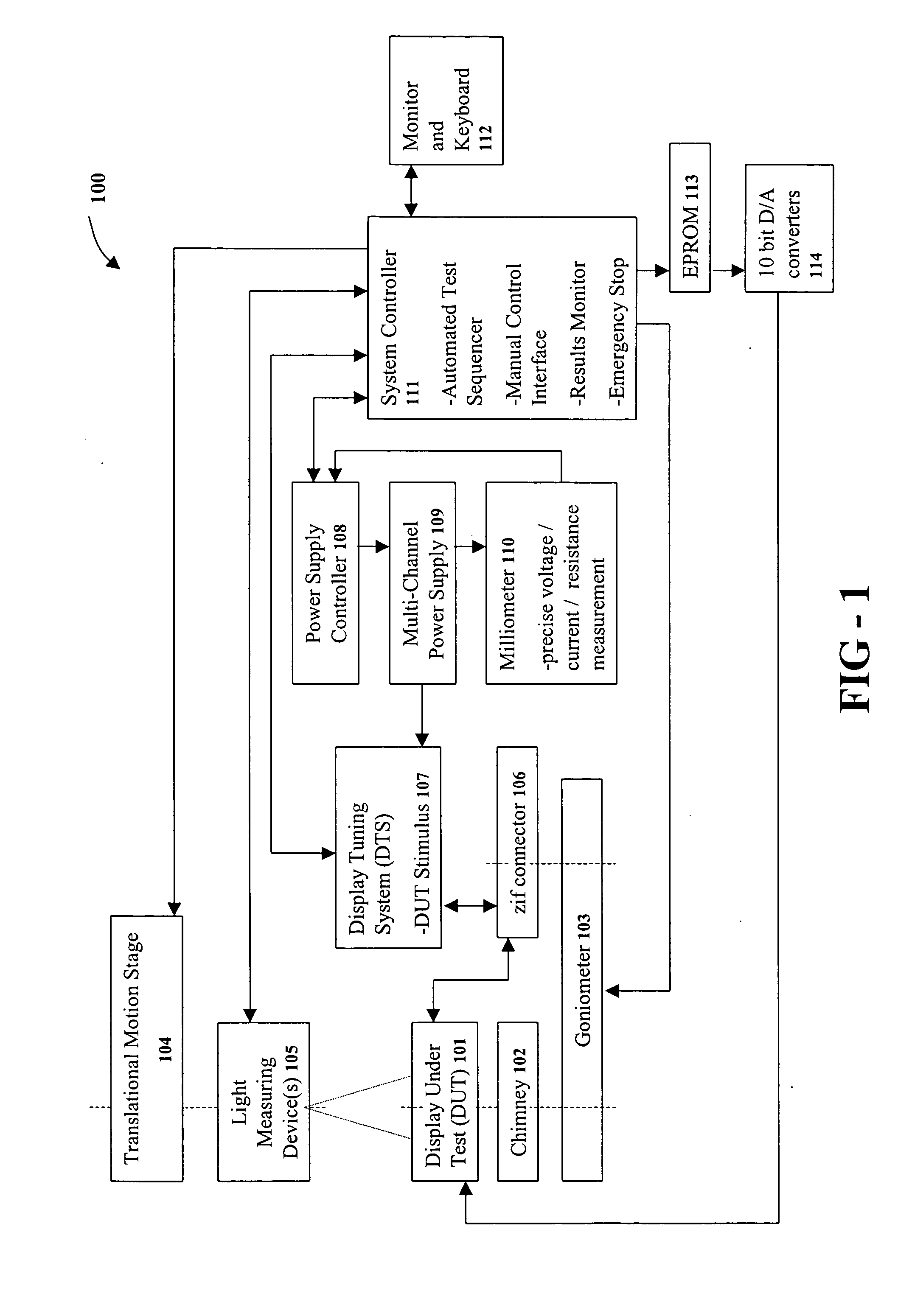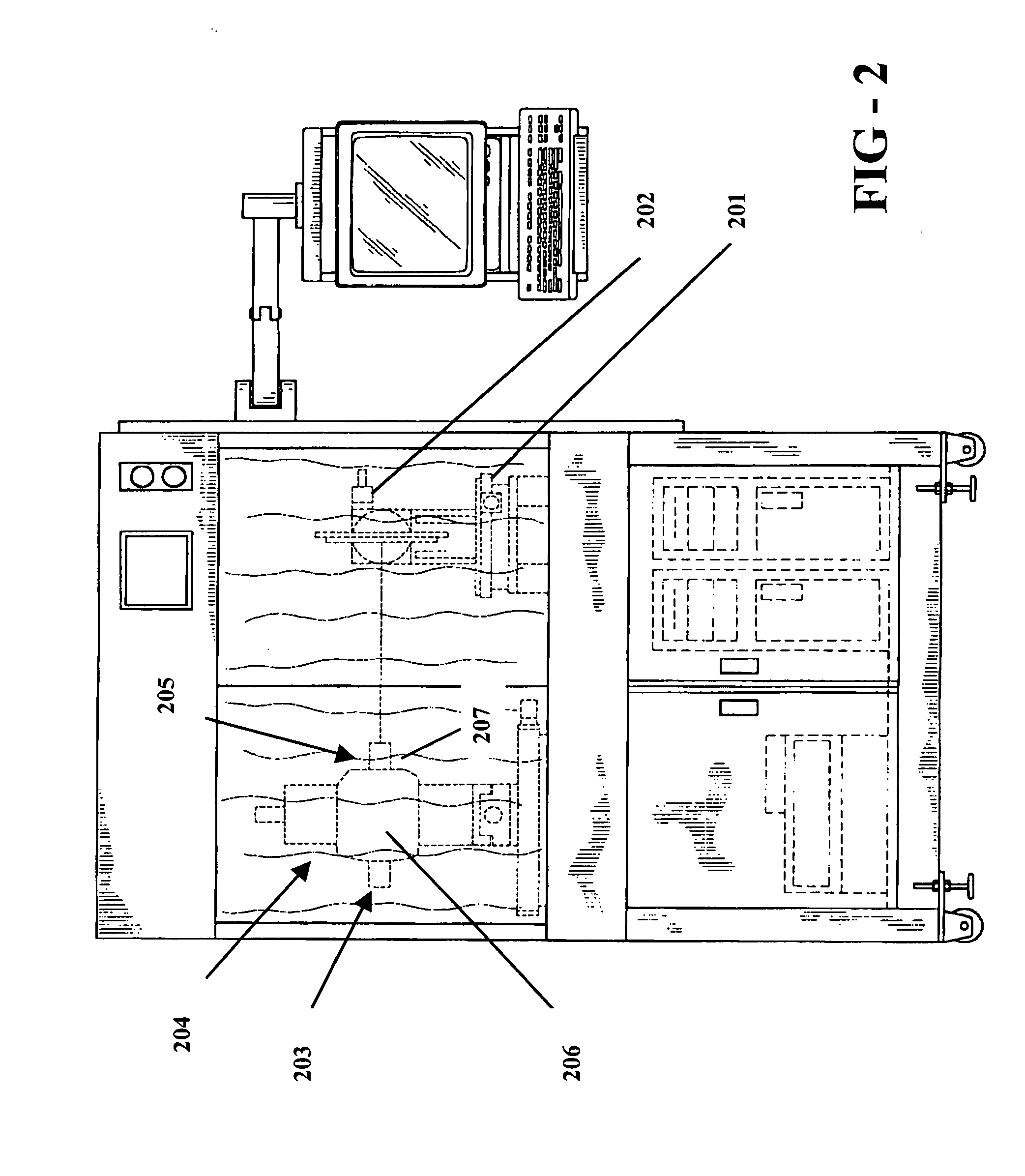Visual display testing, optimization and harmonization method and system
- Summary
- Abstract
- Description
- Claims
- Application Information
AI Technical Summary
Benefits of technology
Problems solved by technology
Method used
Image
Examples
Embodiment Construction
)
[0022] In accordance with the foregoing summary, the following presents a detailed description of the exemplary embodiments of the invention that is currently considered to be the best mode.
[0023]FIG. 1 is a block diagram of visual display testing and harmonization system 100 arranged in accordance with the invention to: a) subject the display under test (DUT) to a standard battery of testing procedures and measure the display's performance for success or failure and; b) conduct and implement the optimization process of the present invention.
[0024] In FIG. 1, DUT 101 is attached to a “chimney” apparatus 102 which is itself attached to goniometer 103. The chimney apparatus may generally be a square tube frame with a backlight on one end to illuminate the DUT that is attached to the other end. The four sides, being opaque, substantially prevent light from diffusing into the testing area and serve to set the DUT at a distance from the backlight.
[0025] The goniometer 103, or rotatio...
PUM
 Login to View More
Login to View More Abstract
Description
Claims
Application Information
 Login to View More
Login to View More - R&D
- Intellectual Property
- Life Sciences
- Materials
- Tech Scout
- Unparalleled Data Quality
- Higher Quality Content
- 60% Fewer Hallucinations
Browse by: Latest US Patents, China's latest patents, Technical Efficacy Thesaurus, Application Domain, Technology Topic, Popular Technical Reports.
© 2025 PatSnap. All rights reserved.Legal|Privacy policy|Modern Slavery Act Transparency Statement|Sitemap|About US| Contact US: help@patsnap.com



